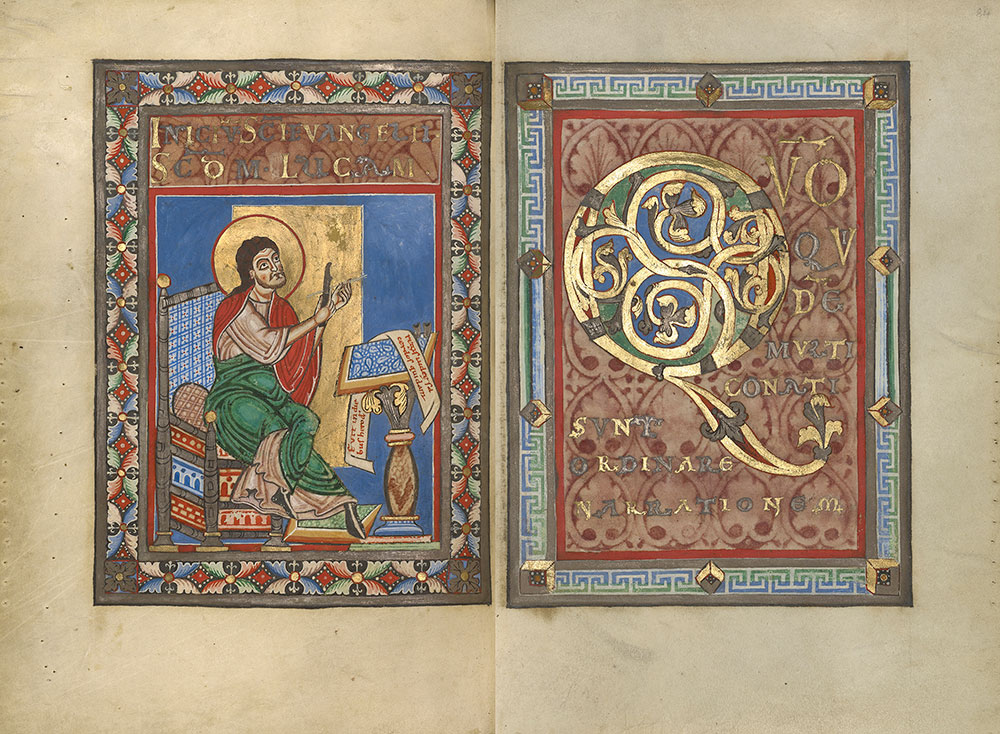
THE MONASTIC SCRIPTORIUM
One of the earliest foundations to flourish in the wake of the tumultuous Investiture Controversy was the Benedictine monastery of Helmarshausen in Saxony. Its abbots acquired important relics from Trier, providing the impetus for new building campaigns as well as promoting manuscript production. This Gospel book is an early witness to the monastery’s cultural vitality. Its inventive evangelist portraits combine new styles of painting from the Rhine-Meuse region with local Saxon traditions. The portrait of Luke is rendered in strong outlines, with drapery characterized by nested V-folds and modeling achieved through heavy bands of shading. In contrast to these innovations, the simulated textile designs of the facing page refer directly to the abstract tradition of painting cultivated at nearby Corvey in the tenth century.
Gospel Book, in Latin
Germany, Helmarshausen, ca. 1120–40
J. Paul Getty Museum, Los Angeles, MS Ludwig II 3, fols. 83v–84r
Purchased by the J. Paul Getty Museum, 1983
